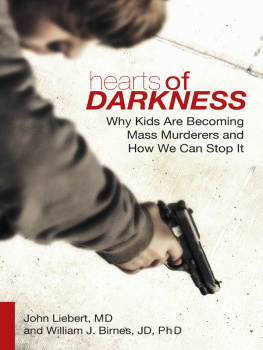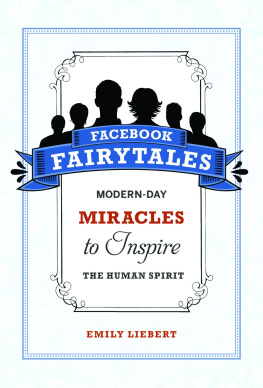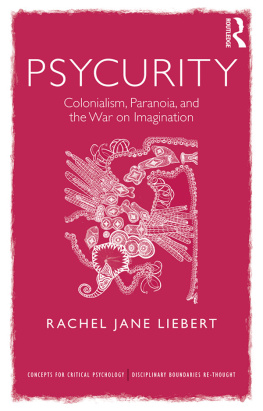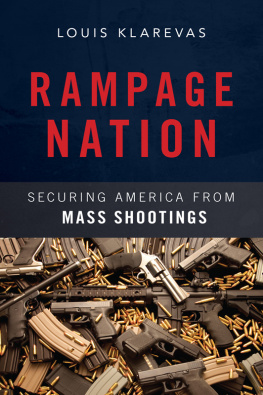Copyright 2014 by John Liebert, MD, and William J. Birnes, JD, PhD
All rights reserved. No part of this book may be reproduced in any manner without the express written consent of the publisher, except in the case of brief excerpts in critical reviews or articles. All inquiries should be addressed to Skyhorse Publishing, 307 West 36th Street, 11th Floor, New York, NY 10018.
Skyhorse Publishing books may be purchased in bulk at special discounts for sales promotion, corporate gifts, fund-raising, or educational purposes. Special editions can also be created to specifications. For details, contact the Special Sales Department, Skyhorse Publishing, 307 West 36th Street, 11th Floor, New York, NY 10018 or .
Skyhorse and Skyhorse Publishing are registered trademarks of Skyhorse Publishing, Inc., a Delaware corporation.
Visit our website at www.skyhorsepublishing.com.
10 9 8 7 6 5 4 3 2 1
Library of Congress Cataloging-in-Publication Data is available on file.
ISBN: 978-1-62914-184-8
E-Book ISBN: 978-1-62914-257-9
Cover design by: Rain Saukas
Cover photo courtesy of Thinkstock.com.
Printed in the United States of America
We live as we dreamalone.
Joseph Conrad, Heart of Darkness
C ONTENTS
Introduction
An angry President Obama emerged from the White House after a minority of United States senators blocked the majority of the Senate from sending an expanded background check gun-purchase bill to the House of Representatives. Flanked by Sandy Hook victims parents, who had lobbied for the background check bill as they kept the memories of their slain children alive, the president pointed out that between 80 and 90 percent of Americans were in favor of keeping guns out of the hands of the seriously mentally ill and violent felons. He also made it clear that the bill prohibited the federal government from keeping a registry of gun owners or those who sought to purchase a gun.
Even as the president spoke about the Senate vote, bombs began to explode at the finish line of the Boston Marathon. It was a short time later that a horrified, but resolute, Governor Deval Patrick assured the residents of Boston that no matter how terrible the bombing of the marathon was, law enforcement would find the perpetrators The president, too, also made that same promise. The nations people scratched their heads about the causes of violence, even while the Tsarnaev brothers, now identified as the suspected perpetrators of the bombing, fought the police with guns and improvised grenades, killing and wounding even more victims in the process. The brothers continued their battle until twenty-six-year-old Tamerlan was shot dead and his younger brother, nineteen-year-old Dzhokhar, took refuge inside a boat in nearby Watertown and was taken into custody the following day. But as the next news cycles wash across their television screens, the public forgets about the causes of violence. America has experienced more than fifteen years of an epidemic of mass murders, attempted and successfully executed bombings, and deaths of innocent children by gun.
In writing this book, we sought to examine the issues of the epidemic of suicide and mass murder in America against the background of the Boston Marathon bombing and the shootings at Tucson, Aurora, and Newtown, as well as the 2007 Virginia Tech massacre. In our research, we found many paths to understanding the nature of this epidemic and the spread of mental illness, the evolution of American society and how it is affecting our children, the influence of the mediaparticularly, violent video gamesand the nature of suicidal mental illness itself. Suicidal mental illness deserves to be studied as a separate aspect of criminal justice and of both psychiatric medicine and clinical psychology. Although the authors have proposed a number of commonsense approaches to dealing with those in America who suffer from mental illness, we also have seen a dire fate that can easily overwhelm the society we take for granted. This dire fate, because of the prevalence of firearms carried by those who should not have them, could become an epidemic of undiagnosed and untreated mental illness and the near-pathological adoration of suicidal mass murderers by young people who aspire to their crimes and level of nihilism. America could become suicide central, a locus of individuals who prey upon both themselves and others and who cause waves of hopelessness and unremitting fury to crash across an entire generation.
The Boston bombings were not idiosyncratic, but rather symptomatic of our current fever of violence, broken out in an epidemic of suicidal mass murder on campuses as seemingly diverse as Virginia Tech and Sandy Hook Elementary. Make no mistake; we are the ultimate victims, unsafe on our streets, in our shopping centers, in our workplaces, and in schoolrooms and schoolyards.
Professional medical associations advise their members to be scientists who rely on data, not emotion, to assert their views. But it is hard, even for medical doctors, to stare into the face of truth while hostile advocates, like the proverbial ostriches, plunge their heads into the sands of unknowing so that they will not have to face the truth. We challenge naysayers to poll trauma surgeons at Harvard and the University of Arizona in the wake of the Boston Marathon bombing and the 2011 Tucson shooting. This is where we find ourselves today and why we have written this book.
(accessed December 11, 2013).
(accessed December 11, 2013).
Chapter 1
The Mass Murder/Suicide Epidemic: A Growing Menace
From a medical perspective, we know that in epidemics, pathogens do not simply stop killing. They spread and look for new hosts in which they can survive in a symbiotic relationship. But when the host dies, they move on. These pathogens are moving onnot only right through our culture, but into societies from modern Western Europe and Scandinavia to the Middle East and North Africa. Governments and individuals only respond with more violence. We are consuming ourselves, and leaders of even the most civilized societies have no idea how to prevent the violence. We can only react to the violence in all-too-familiar ways, such as the literal army of police and military vehicles in Boston. Where did this army zooming past classic Copley Plaza come from? Then, from McHale Pavilion to Sandy Hook and Boston, we lament loss of life while politicians and anchormen engage in a collective head-banging about the causes and what preventive measures they can devise. But, unfortunately, the pattern of mass murder and suicide has become routine, as have the innocuous comments of the punditistas.
We have heard this and similar stories countless times before on the news or online: A strange-looking person walks into a building filled with people. The building could be a school, a workplace, a house of worship, a shopping mall, or even a street-corner gathering. The person may be wearing a baseball cap pulled down over his eyes or turned around backwards. Maybe he wears sunglasses, a black outfit, a hoodie, a flak jacket, or even makeshift camouflage. Few notice the person at first, perhaps because he blends in with the crowd, or perhaps because hes hanging at the edge of the shadows. But suddenly, without any warning, the person brandishes a firearmusually a semiautomatic rifle or pistoland opens fire on people in the crowd, targeting some directly or sweeping the weapon from side to side to cut a wide swath of destruction. People cry for help and dial 911. Scores of cell phone messages light up the local first-responder dispatch boards. People begin screaming as they hit the ground. Some flee for the exits and make it out alive. Others do not. Within minutes, sirens wail. Law enforcement personnel in black uniforms and military helmets enter the building to search for the shooter. However, when they find him, more likely than not, he is already dead from a self-inflicted gunshot wound or merely standing outside in dazed silence, as if another act of murder and mayhem was happening nearby. Another act was almost part of the script in Aurora, Colorado, where a mad chase could have spread murder and mayhem through the streets of Denver but for James Holmess quiet, almost catatonic, surrender. More lives, however, were lost in Cambridge and Watertown because the script was acted out, complete with suicide vests. In Massachusetts, an emergency room doctor, interrupted between cases, answered questions about the causes of death in the case of the older brother, Tamerlan Tsarnaev. This doctor dispassionately told reporters that the elder Tsarnaevs body was too full of bullets and shrapnel from his suicide vest to really tell anything other than that he was fatally shot by police. All in a nights shift in a US emergency room these days?












